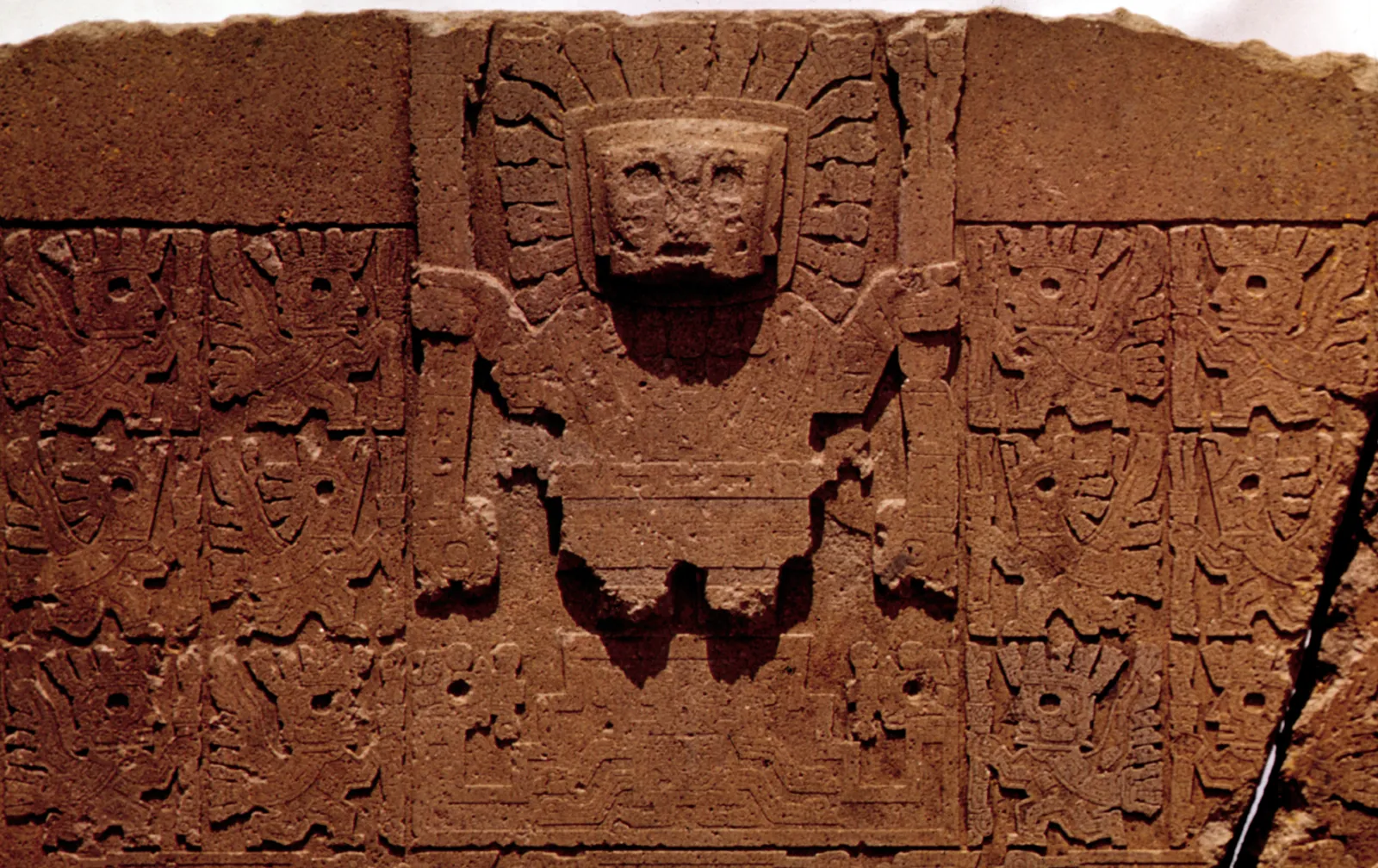Tiwanaku or, as it is less often called, Tiahuanaco (Spanish: Tiahuanaco) is a settlement and the center of the ancient civilization of the same name (XV-XII centuries BC), located on the Altiplano high plateau (Spanish: Altiplano; “High Plane”) on an altitude of about 4 thousand meters above sea level, 20 km from Lake Titicaca (Spanish: Lago Titicaca), in northern Bolivia, in the department of La Paz (Spanish: La Paz).
9 centuries before the appearance of the Incas, in the Andes, on the territory of modern Argentina, parts of Peru, Bolivia and Chile, another, more durable Tiwanaku Empire ruled: while the powerful Inca civilization existed for about 90 years, the Tiwanaku culture flourished for more than 400 years.
It still remains a mystery how the ancient people managed to build massive stone structures on a high mountain plateau, because the weight of some blocks reaches 200 tons. Shrouded in mystery and the decline of the greatest culture. In any case, the rise, rise and fall of a mysterious civilization will forever remain the most important stages in the history of mankind.
In 2000, the unique archaeological complex of Tiwanaku was included in the UNESCO World Heritage Register as “evidence of the power of the culture that played a major role in the development of … pre-Columbian America.”

History of Tiwanaku
One of the main difficulties in the study of the history of Tiwanaku was the lack of written sources. All the most important events are reflected in the legends and songs of the Indians, passed down from generation to generation. The few written records of the pre-Columbian history of the New World are the chronicles of the Spanish priests, whose purpose was to study the customs of the native Indians in order to convert them to Christianity.
However, the information recorded by the priests was often either misunderstood by them or deliberately distorted by the natives because of their unwillingness to cooperate with the Spanish conquistadors.
On the one hand, the Spaniards collected important information, on the other hand, they did everything possible to destroy the spiritual and material culture of the natives. After the robberies and destructive acts of the conquistadors, only what was hidden underground remained.
The complex, fortunately, was safely covered with a thick layer of soil, only huge stone Gates towered above the surface.
Once the mysterious city was called Taypikala (Taypikala; losl. “The stone core of the World”); according to other sources, in the era of its own heyday, it was called Vinaymarka (Eternal City); today its name is Tiwanaku (Dead City).
In general, the name “Tiwanaku” combines a whole historical layer – the civilization of Tiwanaku, the peak of its greatness came at the end of the 1st millennium AD, when the vast territory of the continent came under its influence.
The very same civilization was born in the period 2000 – 1500 years. BC e. The founders of the Empire are considered to be the Indians of South America, who settled in these lands, arriving from North and Central America. Having risen high in the mountains, some tribes united and formed a state, the capital of which was Tiwanaku.
Subsequently, most of the continent joined Tiahuanaco, and there was no aggression and military action on the part of the people uniting other tribes around them. The city became the cultural, economic and religious center of a huge state.

During the rise of the city, about 20 thousand inhabitants lived on its territory of 2.6 km². Although the opinions of historians on this matter differ. So, the first researchers assumed that in the period between 300 BC. e. and 300 AD e. it was not a large city, but only played the role of a religious center of pilgrimage, with a small contingent of permanent residents.
Scientists agree that the city survived 2 disasters: one – natural, caused by the flow of water, and then – a tragedy of unknown origin. The fact that it was the flood that caused the death of the city is evidenced by the remains of the lake flora and the bones of fish found in sediment along with fragments of the skeletons of people who died in a natural disaster.
Moreover, the bones of people and animals are mixed in a chaotic disorder with stone slabs, tools, ceremonial utensils and many other items. It seems that all this was thrown together by an unknown destructive force.
The American historian, archaeologist and anthropologist Alan Kolata suggests that the reason for the fall of a mighty civilization was not a flood, but, on the contrary, a prolonged drought – in the Andean glaciers and bottom sediments of Lake Titicaca, evidence of a long dry period (from the 10th century to 1300), which led to crop failures and, as a result, to famine. Fleeing, people left Tiwanaku.
